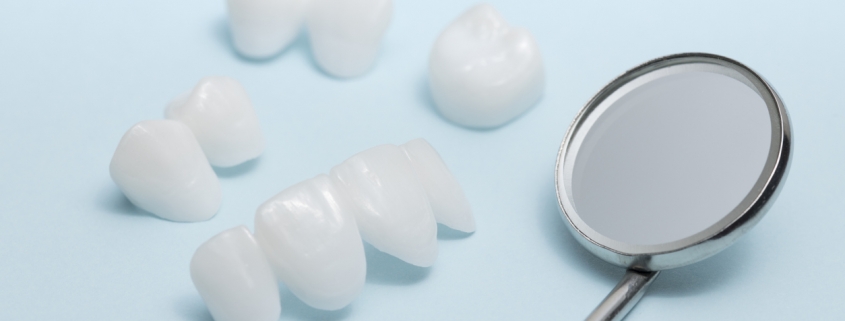Composite vs. Porcelain Veneers
Have you ever wondered how the teeth of celebrities are so perfect? They’re blindingly white, straight, gap-less, and often cause us to feel insecure about our own teeth. But were they born with these perfect teeth, or is there something else at play here? More than likely, these are not their real teeth and are instead veneers.
So, what are veneers? Veneers are thin shells that do not replace your teeth like an implant, but rather adhere to the front of them are to change their shape and reduce gaps. They come in two different kinds of materials: porcelain and composite resin with porcelain being the more expensive and time consuming one. However, porcelain veneers are stronger, stain resistant, and tend to last longer than their composite resin counterpart.
How Are Composite Veneers Applied?
The whole procedure can be done with one visit and is completely painless so it requires no local anesthesia to numb the area. Your dentist will apply a mild, harmless chemical on the surface of your tooth that acts as a glue for the composite resin to stick to. The composite resin is then applied in layers until the desired thickness is achieved, then hardened with the use of a bright light. The resin will be the same color as your natural tooth so they don’t look out of place when finished. Once the last layer has completely hardened, your dentist will then apply the finishing touches by shaping and polishing the tooth to give it a natural and smooth appearance.
How Are Porcelain Veneers Applied?
Porcelain veneers are typically done in two visits and may require the application of a topical anesthetic since your dentist needs to remove a thin layer of enamel from your natural tooth before the veneer can be applied. During the first session, your dentist will make a mold of your teeth since porcelain veneers are custom made for your teeth. While these are being created, your dentist may apply temporary veneers which will be removed until the permanent veneers are completed. Keep in mind that these temporary veneers are very fragile and need to be handled delicately during eating and cleaning as they may become loose.
During your next visit, your dentist will remove the temporary veneers and put a mild chemical on your teeth to make them a little rough, much like the composite veneers. The porcelain veneers are then glued to your teeth one by one.
Am I a Candidate?
Unfortunately, not everyone is eligible for getting veneers, whether it be the composite or Porcelain variety. Listed below are possible reasons why you may not qualify:
- Too little enamel
- Tooth decay
- Gum disease
- If you clench or grind your teeth which can damage and break the veneers
What Else Should I Know?
- Veneers, no matter if porcelain or not, MUST be brushed and cleaned just like your regular teeth.
- This procedure cannot be reversed because part of your enamel has been shaved away.
- Veneers are fragile and can chip. If this happens they will need to be replaced. Avoid chewing hard foods and objects such as ice cubes and fingernails.
- Since veneers are a cosmetic procedure, they may not be covered under your insurance. Talk to your dentist about your options.
Again, only your dentist can answer everything about this procedure. If you’re interested or wondering if you might be a candidate, contact your dentist and set up a consultation.

